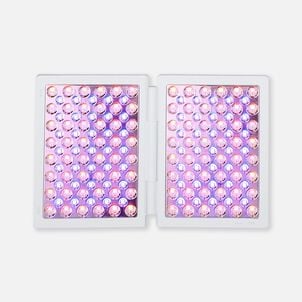HSA contribution limits sound simple enough: If you have coverage for just yourself under an HSA-qualified high deductible health plan (HDHP) — and generally no other coverage — you're allowed to contribute up to $4,150 to an HSA in 2024. And if your HDHP covers at least one other family member, you're allowed to contribute up to $8,300 to your HSA. In both cases, you can contribute an extra $1,000 if you're at least 55 years old.
But life doesn't always fit into perfectly neat boxes that correspond with the start of a new year. Sometimes we change jobs. Sometimes, we have major family events. Sometimes, life just happens. So, how does the HSA contribution limit work if you enroll in an HDHP mid-year?

The IRS allows you two options: You can just prorate your contribution limit based on the number of months you actually have HDHP coverage that year, or you can contribute the full amount that would have been allowed if you'd had HDHP coverage for the whole year.
But, wait a minute… why wouldn't everyone just use the full-year contribution limit?
If you do contribute the full-year amount, then the IRS has what's called a "testing period." Basically, you have to continue to be covered by just an HDHP (remaining HSA-eligible) for the entire following year. If you don't, you'll owe income tax and an additional tax on some of the money you contributed to your HSA during the year that you only had partial-year HDHP coverage.
An example makes this easier to understand
Let's say you start a new job in July 2024, and become eligible for your employer's health plan in September. Your employer offers an HDHP and you enroll in it as a single employee.
As far as the IRS is concerned, as long as you're HSA-eligible as of December 1, they'll let you make the full-year HSA contribution, but the testing period applies. This is called the "last month" rule, because you have to be HSA-eligible as of the first day of the last month of the tax year in order to make the full-year HSA contribution.
So assuming you're still enrolled in the HDHP as of December 1 and you're participating in the health plan as an individual, you can go ahead and contribute up to $4,150 to your HSA for 2024 — and you have until April 15, 2025 to make that contribution.
Alternatively, you can just prorate your contribution for 2024: You're covered under an HDHP for five months (September to December) in 2024, so you can contribute 5/12 of the total contribution limit for 2024.
So which option should you pick?
If you go with the prorated option, you can't contribute as much to your HSA. For someone who wants to maximize their HSA contributions — either to grow them over time or to save for a large medical expenses that's expected in the near future — the lower contribution limit would be a drawback.
But the benefit to the prorated contribution limit is that it doesn't matter what sort of coverage you have the following year. If you continue to have HDHP coverage, you can continue to contribute to your HSA. But if you switch to a different plan, there's no harm done.
On the other hand, if you made the full year contribution for 2024, you'll have to maintain your HDHP coverage (or coverage under a different HDHP) for all of 2025. What happens if you don't do that? Let's say you end up leaving that job in July 2024 and switching to a different employer that only offers a non-HDHP option.
In that case, you wouldn't be HSA-eligible for all of 2025 (in other words, you "failed" the testing period), which means the IRS is going to take another look at what you contributed for 2024.
They'll take the prorated amount that you could have contributed and subtract it from the $4,150 that you actually contributed. The difference will be added to your taxable income in 2025. AND you also have to pay a 10% additional tax on that total, adding more to your tax bill.
As with any tax-related question, you'll want to consult with a tax adviser to get advice that's specific to your situation.
—
Thank you for visiting the HSA Store Learning Center. Don’t forget to follow us for more helpful tips on Facebook, Instagram, and Twitter.


.png)
















